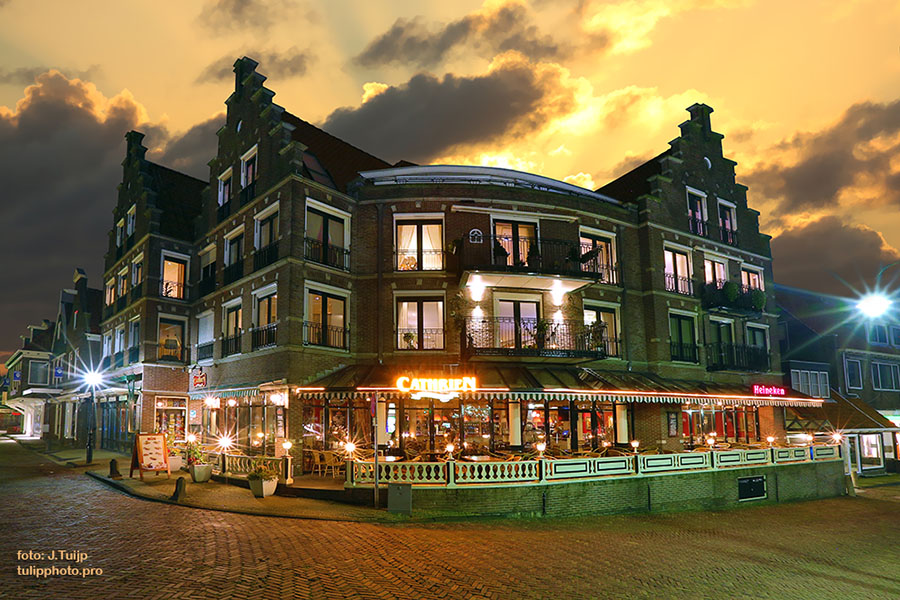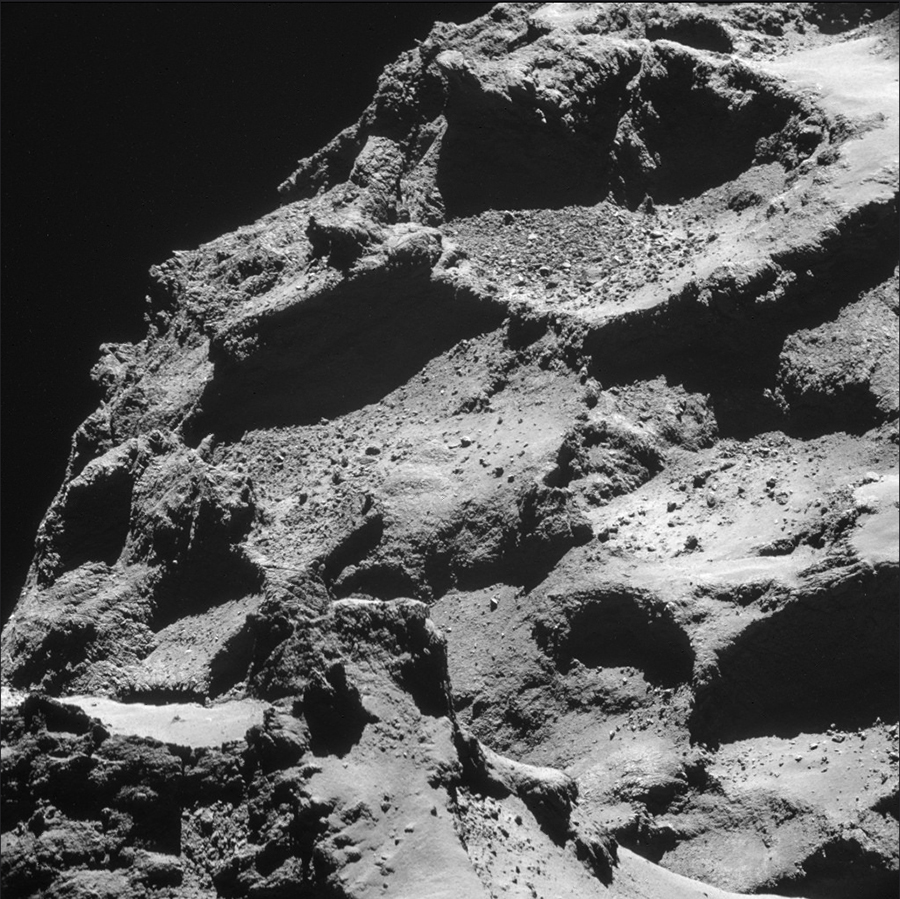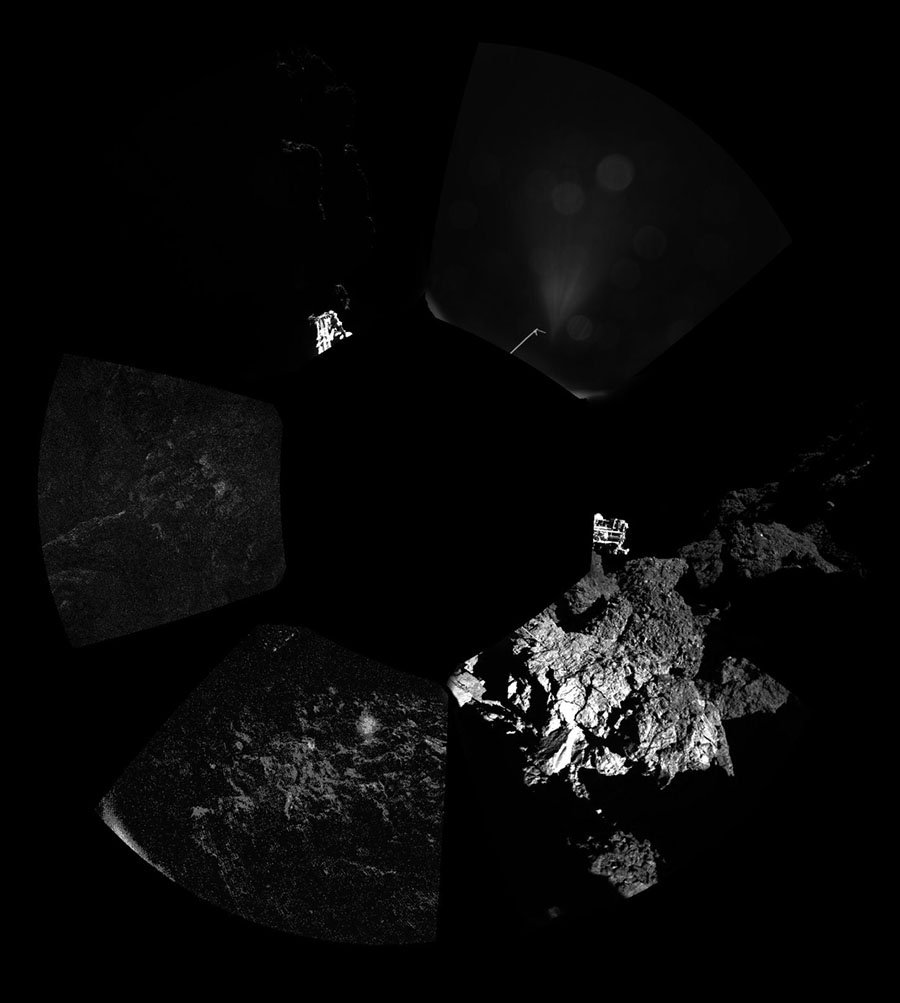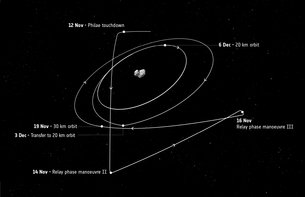Vorige week experimenteerde ik met mijn nieuwe camera met wat tijd opnames op de Volendamse dijk. Het resultaat is hieronder te zien
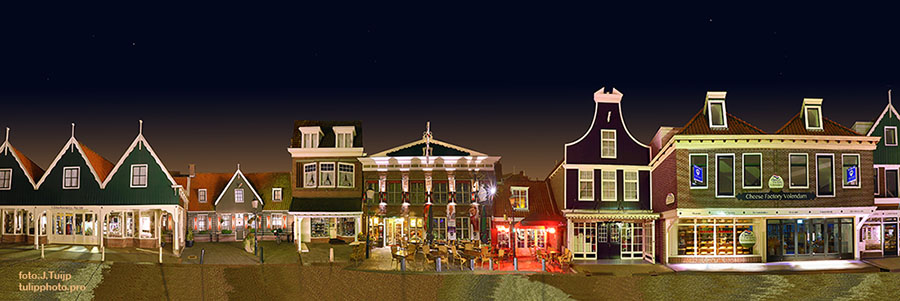
In het midden Hotel Spaander op de Volendamse dijk. Voor deze foto heb ik 15 opnames die ik 5 meter naast elkaar maakte aan elkaar geshopt, een zeer langdurige photoshop klus, de verhoudingen zijn helemaal werkelijkheidsgetrouw. Het resultaat is in zoverre bijzonder, dat niemand dit tafereel ooit zo aan elkaar heeft kunnen zien, de foto kan ook niet gemaakt worden met een wijdhoek omdat de tegenoverliggende panden te dichtbij staan
Onze Afrika reis komt nu heel dichtbij
Over een week vertrekken we voor een bijna 2 maanden lange reis naar Afrika; de route gaat door Namibie, Botswana, Zambia, Zimbabwe, Zuidafrika en Mozambique. We zijn de laatste dagen eigenlijk continue bezig met de voorbereidingen. Niet alleen met de reis zelf maar er zijn natuurlijk allerlei zaken die geregeld moeten worden als je zo lang van huis gaat. Zo wordt ons huis weer ingericht voor de gasten die gedurende onze afwezigheid ons huis zullen bewonen
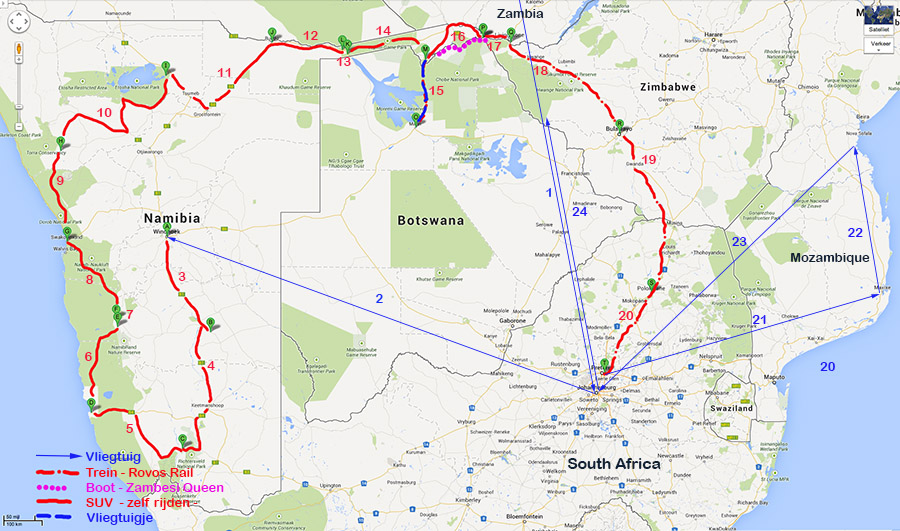
Op deze kaart is de route te zien die we zullen maken samen met vrienden Wim en Ria Welman uit Aerdenhout. De eerste 3 weken van de trip gaat per SUV door het zeer fotogenieke woestijnlandschap van Namibië. Onze reisvrienden rijden separaat van ons in een eigen SUV door Namibië, maar we zitten s’ avonds wel in dezelfde hotels. De reis omhelst ook nog een riviercruise in Botswana op de Zambeze river naar Zambia en een bijzondere treinreis met Rovo Rail dwars door Zimbabwe naar Pretoria en een vliegreis naar Mozambique
Landing van Philae komeetlander schokkende sensatie
De gehele dag zat ik afgelopen woensdag te kijken naar de live TV uitzending van ESA naar de landing van de komeetlander Philae vanaf de satelliet Rosetta na 10 jaar onderweg te zijn geweest. Kippenvel en ontroering, wat zijn we bevoorrecht dat we dit nog mee kunnen maken….. Onvoorstelbaar dat mensen dit voor elkaar hebben gekregen, en dat op een afstand van 500 miljoen kilometer. En dan wat er nu nog allemaal gebeurt en geregeld wordt vanaf dit kleine aardbolletje in die verre, verre, donkere, koude en wijde ruimte. Een onvoorstelbaar hoogstandje van menselijk vernuft…
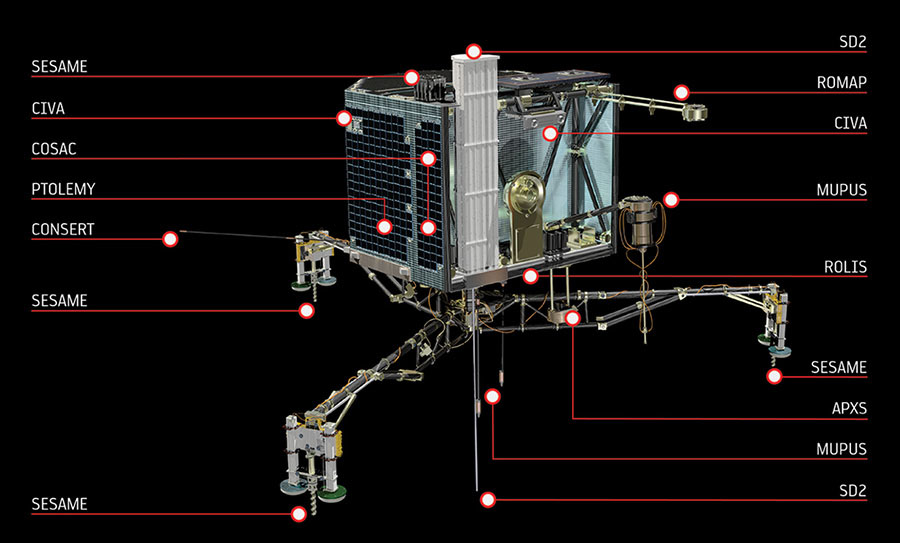
Title Philae’s instruments (black background) Copyright ESA/ATG medialab Description Rosetta will deploy the Philae lander to the surface of comet 67P/Churyumov-Gerasimenko for in situ analysis with its 10 instruments: APXS: Alpha Proton X-ray Spectrometer (studying the chemical composition of the landing site and its potential alteration during the comet’s approach to the Sun) CIVA: Comet Nucleus Infrared and Visible Analyser (six cameras to take panoramic pictures of the comet surface) CONSERT: COmet Nucleus Sounding Experiment by Radiowave Transmission (studying the internal structure of the comet nucleus with Rosetta orbiter) COSAC: The COmetary SAmpling and Composition experiment (detecting and identifying complex organic molecules) PTOLEMY: Using MODULUS protocol (Methods Of Determining and Understanding Light elements from Unequivocal Stable isotope compositions) to understand the geochemistry of light elements, such as hydrogen, carbon, nitrogen and oxygen. MUPUS: MUlti-PUrpose Sensors for Surface and Sub-Surface Science (studying the properties of the comet surface and immediate sub-surface) ROLIS: Rosetta Lander Imaging System (providing the first close-up images of the landing site) ROMAP: Rosetta Lander Magnetometer and Plasma Monitor (studying the magnetic field and plasma environment of the comet) SD2: Sampling, drilling and distribution subsystem (drilling up to 23 cm depth and delivering material to onboard instruments for analysis) SESAME: Surface Electric Sounding and Acoustic Monitoring Experiment (probing the mechanical and electrical parameters of the comet)
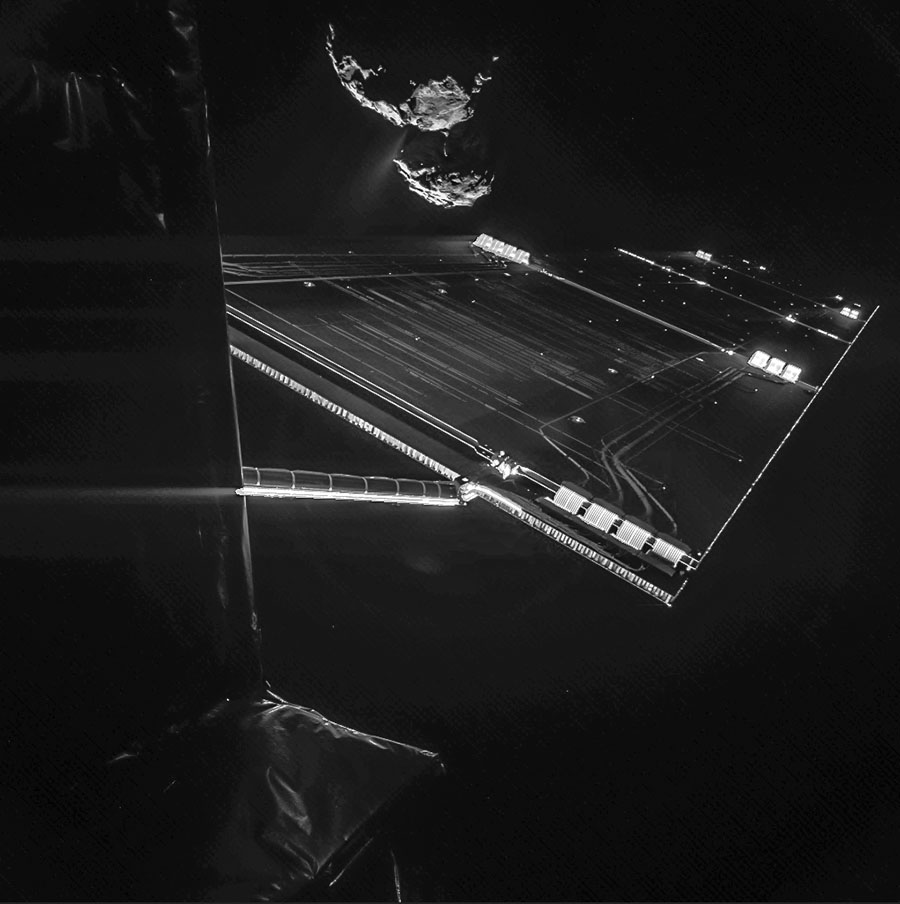
Using the CIVA camera on Rosetta’s Philae lander, the spacecraft have snapped a ‘selfie’ at comet 67P/Churyumov–Gerasimenko from a distance of about 16 km from the surface of the comet. The image was taken on 7 October and captures the side of the Rosetta spacecraft and one of Rosetta’s 14 m-long solar wings, with the comet in the background. Two images with different exposure times were combined to bring out the faint details in this very high contrast situation. The comet’s active ‘neck’ region is clearly visible, with streams of dust and gas extending away from the surface.
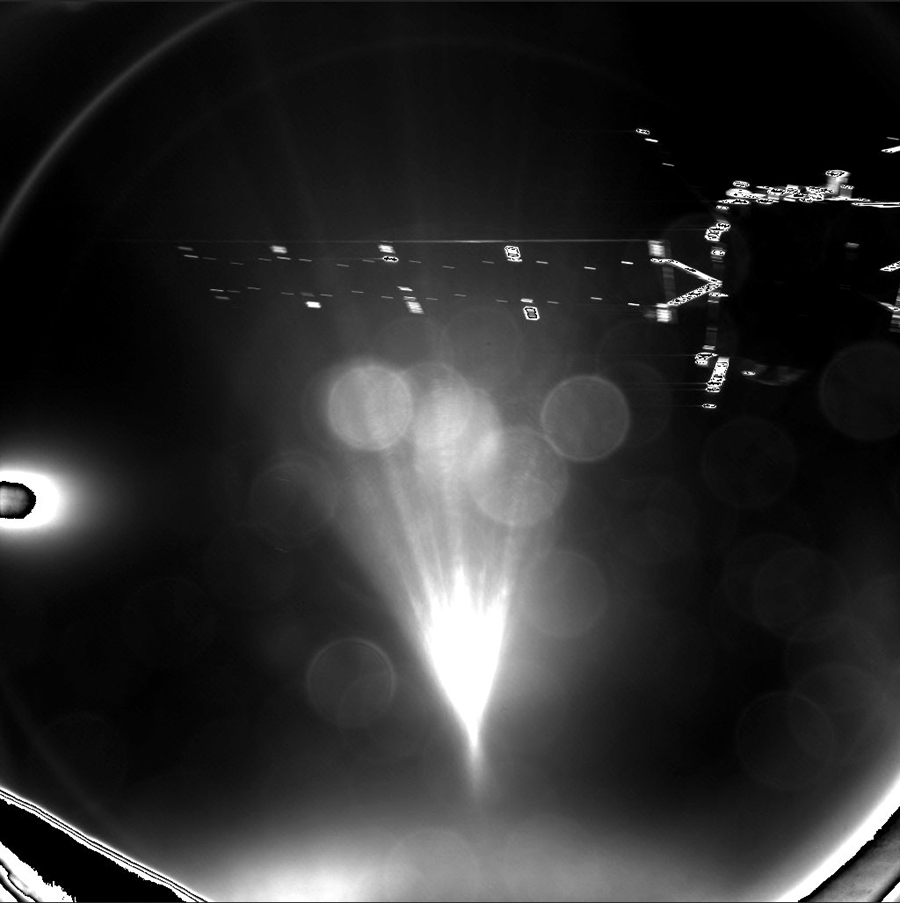
Title Farewell Rosetta Released 12/11/2014 2:50 pm Copyright ESA/Rosetta/Philae/CIVA Description Rosetta’s lander Philae took this parting shot of its mothership shortly after separation. The image was taken with the lander’s CIVA-P imaging system and captures one of Rosetta’s 14 metre-long solar arrays. It was stored onboard the lander until the radio link was established with Rosetta around two hours after separation, and then relayed to Earth. The lander separated from the orbiter at 09:03 GMT/10:03 CET and is expected to touch down on Comet 67P/Churyumov–Gerasimenko seven hours later. Confirmation of a successful touchdown is expected in a one-hour window centred on 16:02 GMT / 17:02 CET. Rosetta and Philae had been riding through space together for more than 10 years. While Philae is set to become the first probe to land on a comet, Rosetta is already the first to rendezvous with a comet and follow it around the Sun. The information collected by Philae at one location on the surface will complement that collected by the Rosetta orbiter for the entire comet.
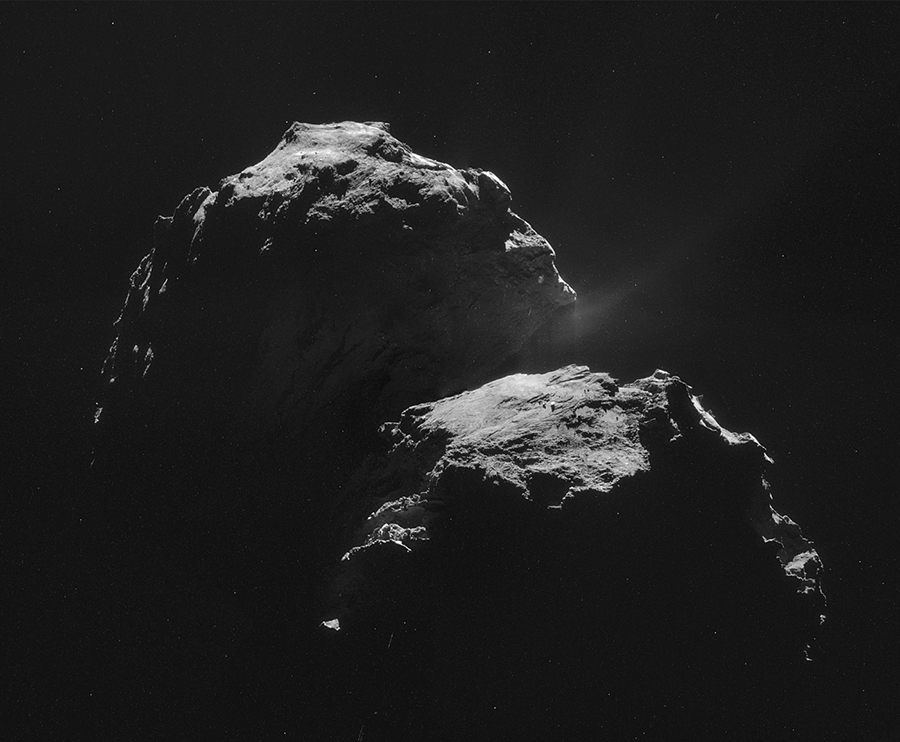
Deze foto van de komeet werd genomen door Rosetta op een afstand van 40 km . De komeet is bijna 5 x 4 km groot
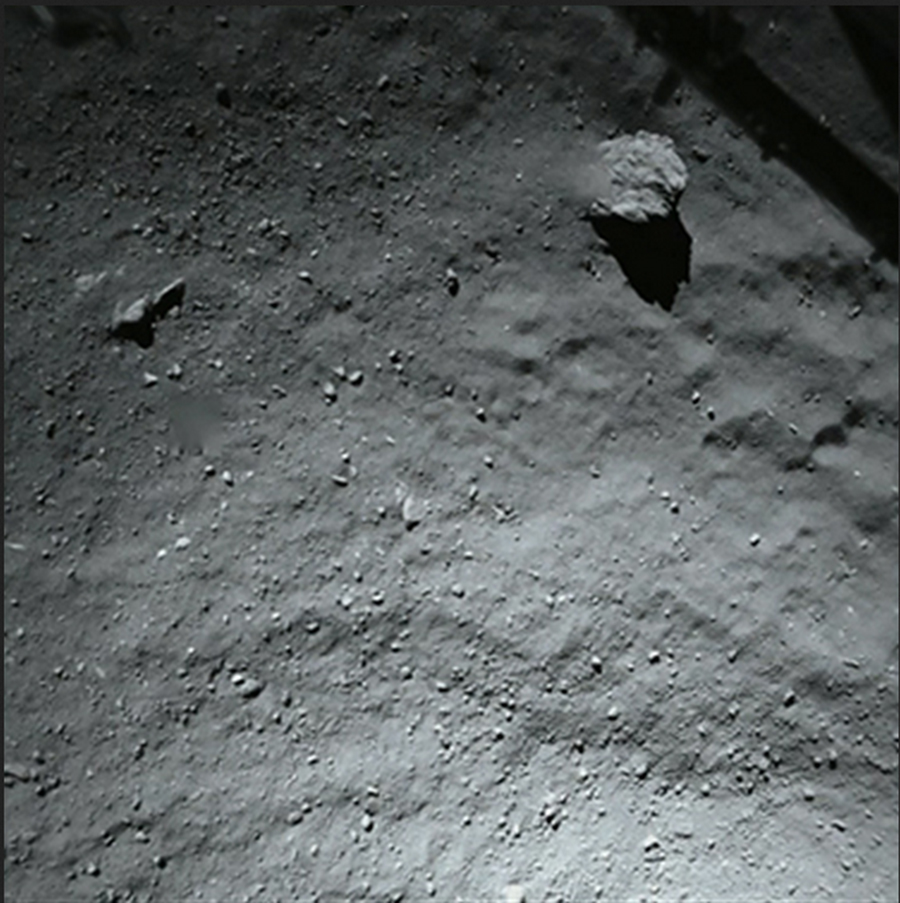
This image was taken by Philae’s down-looking descent ROLIS imager when it was about 40 m above the surface of Comet 67P/Churyumov-Gerasimenko. It shows that the surface of the comet is covered by dust and debris ranging from mm to metre sizes. The large block in the top right corner is 5 m in size. In the same corner the structure of the Philae landing gear is visible. The aim of the ROLIS experiment is to study the texture and microstructure of the comet’s surface. ROLIS (ROsetta Lander Imaging System) has been developed by the DLR Institute of Planetary Research, Berlin.
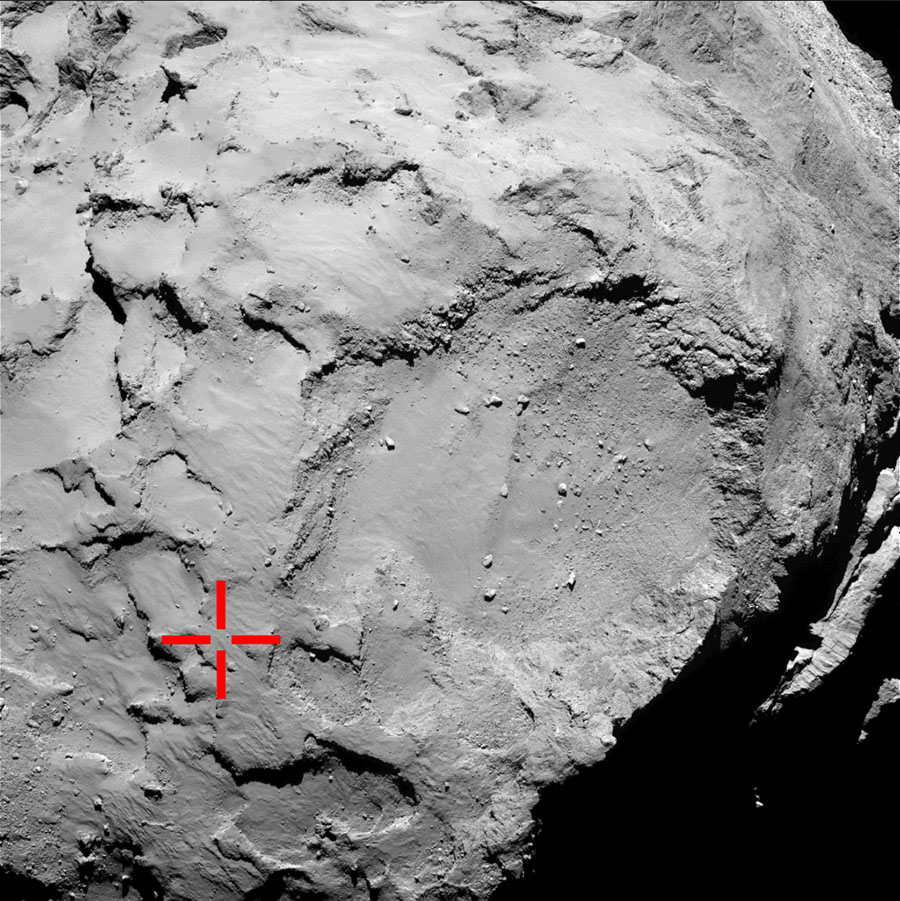
This image from Rosetta’s OSIRIS narrow-angle camera is marked to show the location of the first touchdown point of the Philae lander. It is thought that Philae bounced twice before settling on the surface of Comet 67P/Churyumov-Gerasimenko. The OSIRIS image was taken from a distance of 50 km on 2 September 2014, prior to landing.
In addition, the lander’s body was lifted by about 4 cm and rotated about 35° in an attempt to receive more solar energy. But as the last science data fed back to Earth, Philae’s power rapidly depleted.
“It has been a huge success, the whole team is delighted,” said Stephan Ulamec, lander manager at the DLR German Aerospace Agency, who monitored Philae’s progress from ESA’s Space Operations Centre in Darmstadt, Germany, this week.
“Despite the unplanned series of three touchdowns, all of our instruments could be operated and now it’s time to see what we’ve got.”
Against the odds – with no downwards thruster and with the automated harpoon system not having worked – Philae bounced twice after its first touchdown on the comet, coming to rest in the shadow of a cliff on Wednesday 12 November at 17:32 GMT (comet time – it takes over 28 minutes for the signal to reach Earth, via Rosetta).
The search for Philae’s final landing site continues, with high-resolution images from the orbiter being closely scrutinised. Meanwhile, the lander has returned unprecedented images of its surroundings.
While descent images show that the surface of the comet is covered by dust and debris ranging from millimetre to metre sizes, panoramic images show layered walls of harder-looking material. The science teams are now studying their data to see if they have sampled any of this material with Philae’s drill
“We still hope that at a later stage of the mission, perhaps when we are nearer to the Sun, that we might have enough solar illumination to wake up the lander and re-establish communication, ” added Stephan.
From now on, no contact will be possible unless sufficient sunlight falls on the solar panels to generate enough power to wake it up. The possibility that this may happen later in the mission was boosted when mission controllers sent commands to rotate the lander’s main body with its fixed solar panels. This should have exposed more panel area to sunlight.
The next possible communication slot begins on 15 November at about 10:00 GMT / 11:00 CET. The orbiter will listen for a signal, and will continue doing so each time its orbit brings it into line-of-sight visibility with Philae. However, given the low recharge current coming from the solar panels at this time, it is unlikely that contact will be re-established with the lander in the near future.
Meanwhile, the Rosetta orbiter has been moving back into a 30 km orbit around the comet.
It will return to a 20 km orbit on 6 December and continue its mission to study the body in great detail as the comet becomes more active, en route to its closest encounter with the Sun on 13 August next year.
Over the coming months, Rosetta will start to fly in more distant ‘unbound’ orbits, while performing a series of daring flybys past the comet, some within just 8 km of its centre.
Data collected by the orbiter will allow scientists to watch the short- and long-term changes that take place on the comet, helping to answer some of the biggest and most important questions regarding the history of our Solar System. How did it form and evolve? How do comets work? What role did comets play in the evolution of the planets, of water on the Earth, and perhaps even of life on our home world.
“The data collected by Philae and Rosetta is set to make this mission a game-changer in cometary science,” says Matt Taylor, ESA’s Rosetta project scientist.
Fred Jansen, ESA’s Rosetta mission manager, says, “At the end of this amazing rollercoaster week, we look back on a successful first-ever soft-landing on a comet. This was a truly historic moment for ESA and its partners. We now look forward to many more months of exciting Rosetta science and possibly a return of Philae from hibernation at some point in time.”



